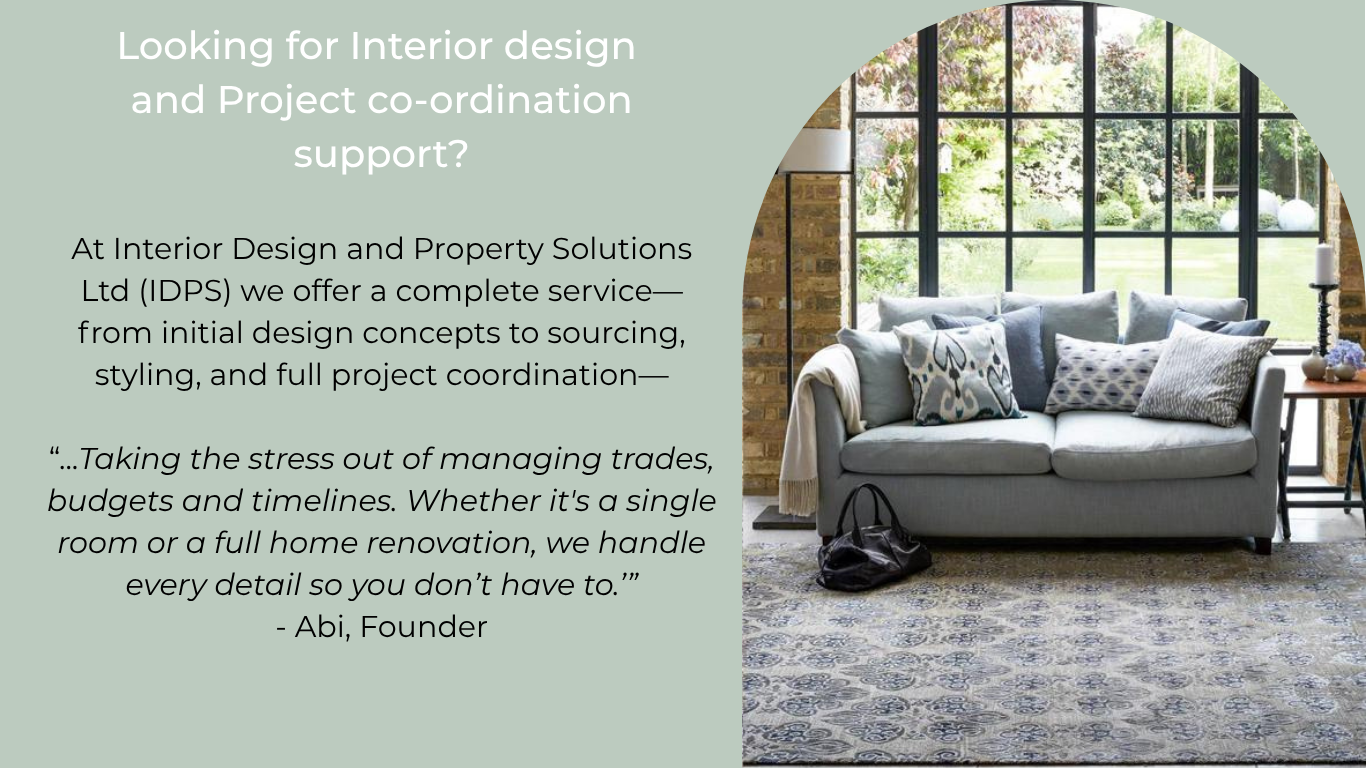Understanding Victorian Interior Design
Hello! Abi from Interior Design and Property Solutions (IDPS) in Devon. Today, I’m thrilled to delve into the rich tapestry of Victorian interior design—a style that beautifully marries opulence with eclecticism. Whether you're restoring a period property or infusing your modern home with timeless elegance, the Victorian era offers a wealth of inspiration.
The Victorian era, spanning from 1837 to 1901 during Queen Victoria's reign, was a period of profound change and innovation. Industrial advancements made intricate design elements more accessible, leading to interiors that were both luxurious and expressive. Victorian interiors are characterised by rich colours, ornate furnishings, and a blend of historical influences, creating spaces that are both grand and inviting.Toxigon+1ehow.com+1
Key Characteristics of Victorian Interiors
….
Ornate Details
Victorian design is renowned for its attention to detail. Intricate mouldings, carved woodwork, and decorative tiles are common features that add depth and character to a space. These elements contribute to the rich, layered aesthetic that defines Victorian interiors.Toxigon
Rich Colour Palettes
The colour schemes of Victorian homes often feature deep, saturated hues such as burgundy, emerald green, and royal blue. These colors create a sense of warmth and luxury, setting a dramatic tone for the interiors. In modern adaptations, these traditional colors are sometimes paired with lighter, neutral tones to balance the opulence with a contemporary feel.Toxigon+1Toxigon+1Toxigondecoist
Luxurious Fabrics
Velvet, silk, and brocade were staples in Victorian interiors, used for upholstery, curtains, and cushions. These sumptuous materials add texture and richness to a room, enhancing its overall elegance. In modern interpretations, these fabrics can be used selectively to maintain the luxurious feel without overwhelming the space.ehow.com+4decoist+4Toxigon+4
Eclectic Furnishings
Victorian furniture often drew inspiration from various historical styles, including Gothic, Rococo, and Neoclassical. This eclectic approach resulted in pieces with intricate carvings, clawfoot legs, and ornate detailing. In contemporary settings, mixing antique and modern furniture can create a dynamic and personalized interior that honors the past while embracing the present.
Decorative Accessories
Accessories such as antique mirrors, framed art, and decorative vases play a significant role in Victorian interiors. These items add personality and charm, serving as focal points that tie the room's design together. In modern homes, incorporating vintage-inspired accessories can infuse character and warmth into the space.
Integrating Victorian Elements into Modern Homes
Bringing Victorian style into a contemporary setting involves blending traditional elements with modern sensibilities. Here are some practical tips to achieve this balance:.
Start with Statement Pieces
Introduce Victorian elements gradually by incorporating statement pieces such as an ornate mirror, a vintage chandelier, or a richly upholstered armchair. These items can serve as focal points that anchor the room's design.Toxigon
Mix Textures and Patterns
Combine luxurious fabrics like velvet and brocade with contemporary pieces to create depth and interest. Layering different textures and patterns can evoke the richness of Victorian interiors while maintaining a fresh and modern aesthetic.decoist+6Designer Cheatsheet+6Realicozy+6
Use Color Strategically
While deep, jewel tones are characteristic of Victorian design, modern adaptations often incorporate a mix of rich and neutral colors. For instance, pairing a deep emerald green with soft gray walls can create a balanced and inviting atmosphere.
Incorporate Architectural Details
If possible, preserve or restore architectural features such as crown moldings, wainscoting, and tall baseboards. These elements add historical charm and can serve as a foundation for your design.
Personalise with Accessories
Incorporate vintage-inspired accessories like antique clocks, framed botanical prints, or decorative ceramics. These items add personality and warmth, making the space feel lived-in and inviting.
Final Thoughts
Embracing Victorian interior design allows you to create spaces that are rich in history and character. By thoughtfully incorporating elements such as ornate details, rich color palettes, and luxurious fabrics, you can infuse your home with timeless elegance. Remember, the key is to blend traditional elements with modern sensibilities to create a harmonious and inviting space.Toxigon
If you're considering integrating Victorian elements into your home, we're here to help. At IDPS, we offer personalised design consultations to guide you through the process, ensuring that your space reflects your unique style and preferences.
Feel free to reach out to us for more information or to schedule a consultation. We look forward to helping you create a home that embodies the beauty and grandeur of Victorian design.





